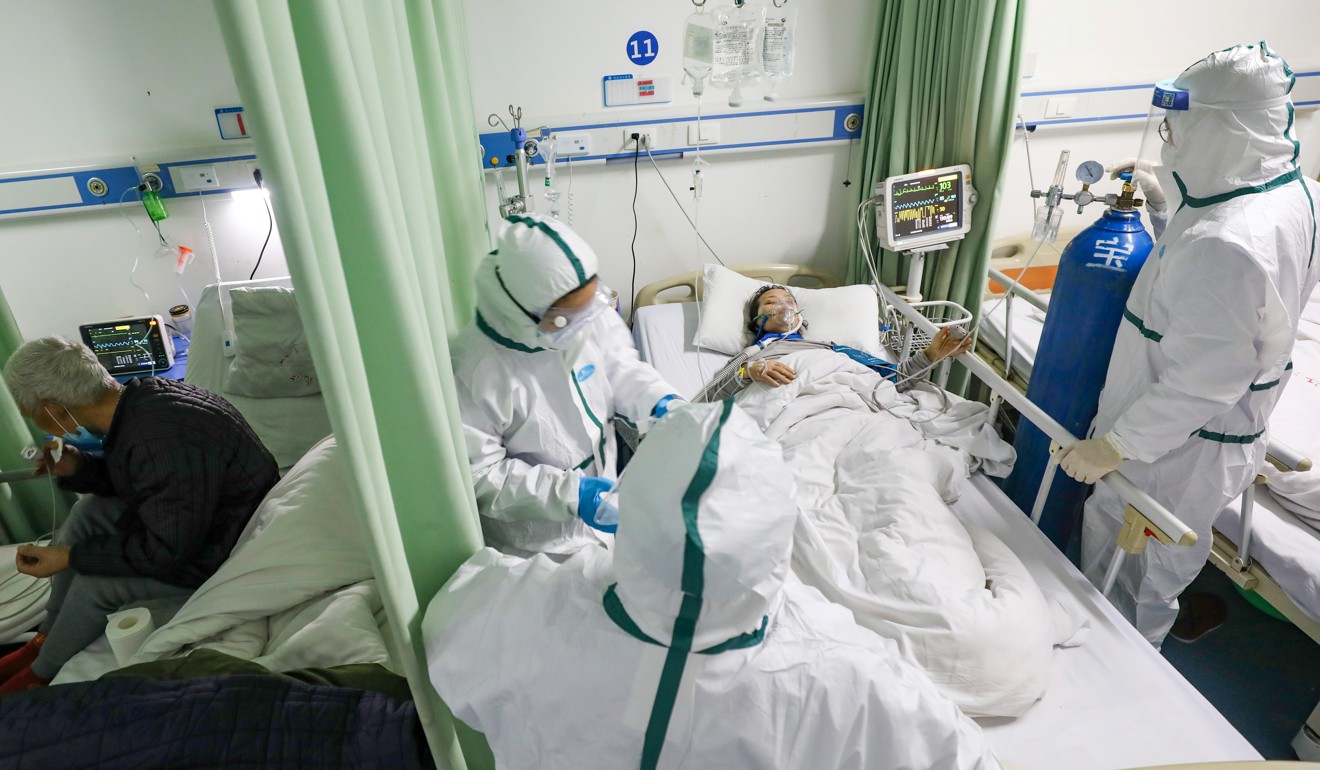
As coronavirus cases get priority in Wuhan hospitals, other patients are losing hope
- Thousands of people are not getting the treatment they need because medical resources have been diverted to fight outbreak
- One hospital says it can no longer offer transplant surgery as it doesn’t have enough doctors and blood products
University student Wan Ruyi was diagnosed with acute leukaemia in May. The 21-year-old has been in the Wuhan Union Hospital for the past 10 months, and now, severely ill, she is in dire need of a bone-marrow transplant.
“Wan has had three rounds of chemotherapy, but the last one in October wasn’t very successful, and the bone marrow aspiration she had on Sunday showed the treatment didn’t have the expected outcome,” said her mother, Wu Qiong.
Wuhan Union Hospital was one of the first designated to treat coronavirus patients, on January 21. It told the family it had stopped doing transplant surgery because there were not enough doctors and blood products. The family tried a hospital in Hebei province, but they were told to stay in Wuhan.
On Sunday, Wan was in so much pain and discomfort she said she wanted to die.
“Every single day in Hubei [province] makes me more helpless and desperate as my daughter continues to suffer in agony,” Wu said. “Her condition is getting more unstable.”
For 81-year-old Fu Daoshun, the outbreak means he can no longer receive the daily injection he needs to treat deep-vein thrombosis in his legs. He used to have this done at the Puai Hospital, but it too was designated as a centre for treating coronavirus cases, from January 23, and no longer has the resources to treat patients like Fu.
His granddaughter, Fu Yufen, said all he can do now is stay in bed.
“It’s too painful for him to walk after going days without the injections to ease the pain, and now it’s too dangerous for him to go to the hospital anyway because he could easily get the virus,” she said.
“And because the city’s in lockdown, we can’t visit. So my grandma, who’s also very old, has to look after him on her own. I’m really worried that they will fall ill.”
Fu Yufen said her grandparents were receiving grocery deliveries from community officers, but she was worried about how long they would be able to manage, adding that her grandfather had written a will last week.

Health experts said although coronavirus patients had been given priority, people with other chronic and acute diseases also needed support.
Tang Shenlan, a professor with the Department of Population Health Science at the Duke University School of Medicine and deputy director of the Duke Global Health Institute in the US, said it was wrong to put all the focus on coronavirus cases, and not helpful for people with other serious illnesses.
“Hospitals in Wuhan should find an innovative way to provide essential services to these patients – for example using telemedicine [to treat and diagnose remotely] including prescriptions,” he said.
Tang said while there had been progress since the health care system reform began in 2009, with more people now covered by health insurance, “reforming public hospitals in China has failed”.
“China needs a revolution, not a reform, of its health care system – including clinical and public health service financing and provision,” said Tang, who drafted the World Health Organisation proposal for reform of China’s health care system as a senior adviser to the WHO more than a decade ago.
Yao Zelin, a sociology professor focusing on health care at East China Normal University in Shanghai, said the medical system needed to be improved at the grass-roots level.
“China has emphasised the build-up of big hospitals but not the network of clinics, which means that during an emergency like the coronavirus outbreak, only the big hospitals can be used to tackle the epidemic, and the surge of patients quickly takes up all the resources,” Yao said.
Coronavirus: heads roll in Hubei as Beijing axes health officials
Gregory Gray, a professor specialising in infectious diseases at Duke University’s Global Health Institute, said China also needed to better anticipate emerging virus threats so it could respond to them earlier.
“One way to do so is to encourage ‘one health’ oriented studies at the places where humans and animals mix like live animal markets and domestic animal farms,” Gray said. “We need to find ways to work more closely together – human health, animal health, environmental health and agriculture industries.”

